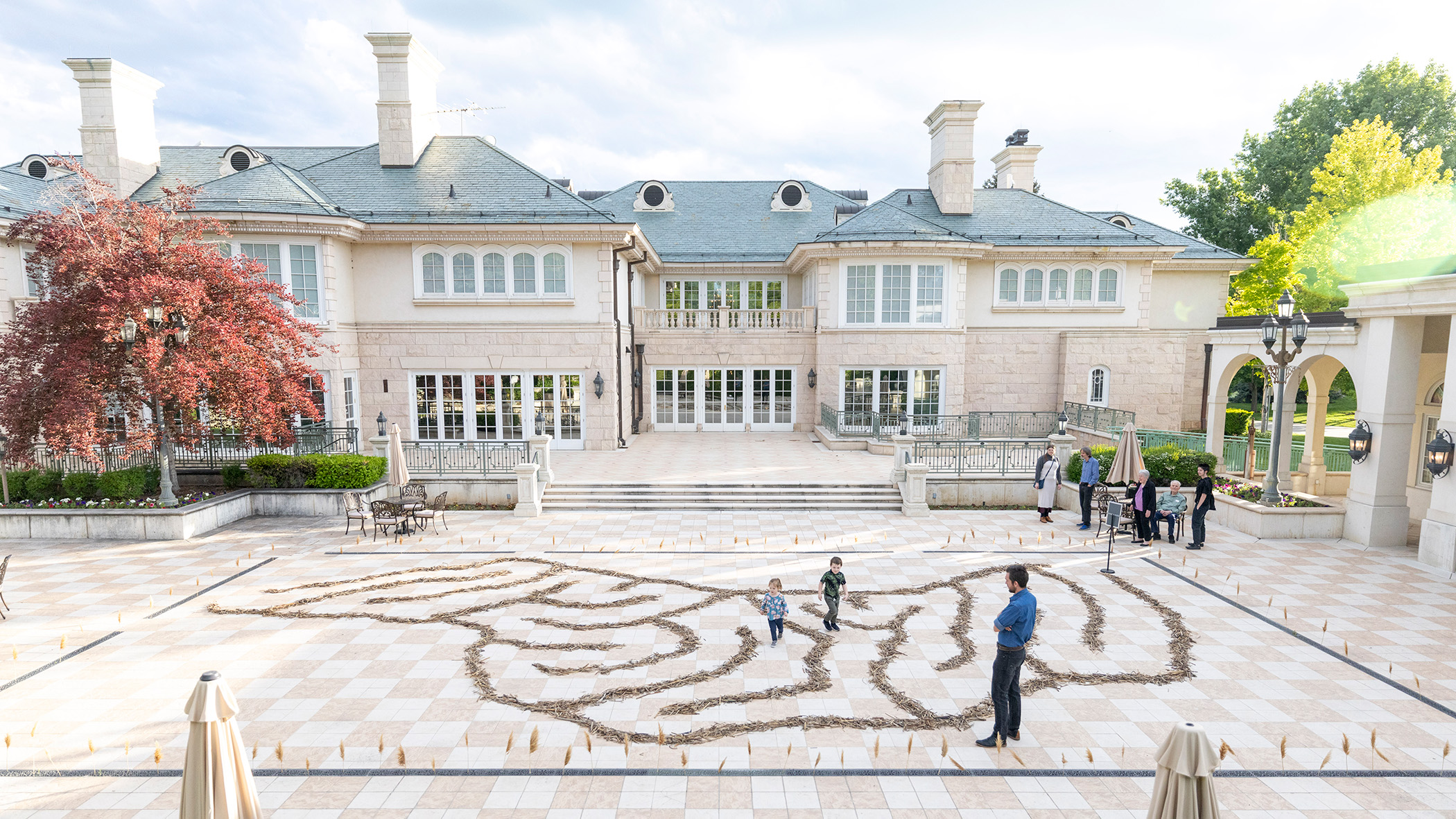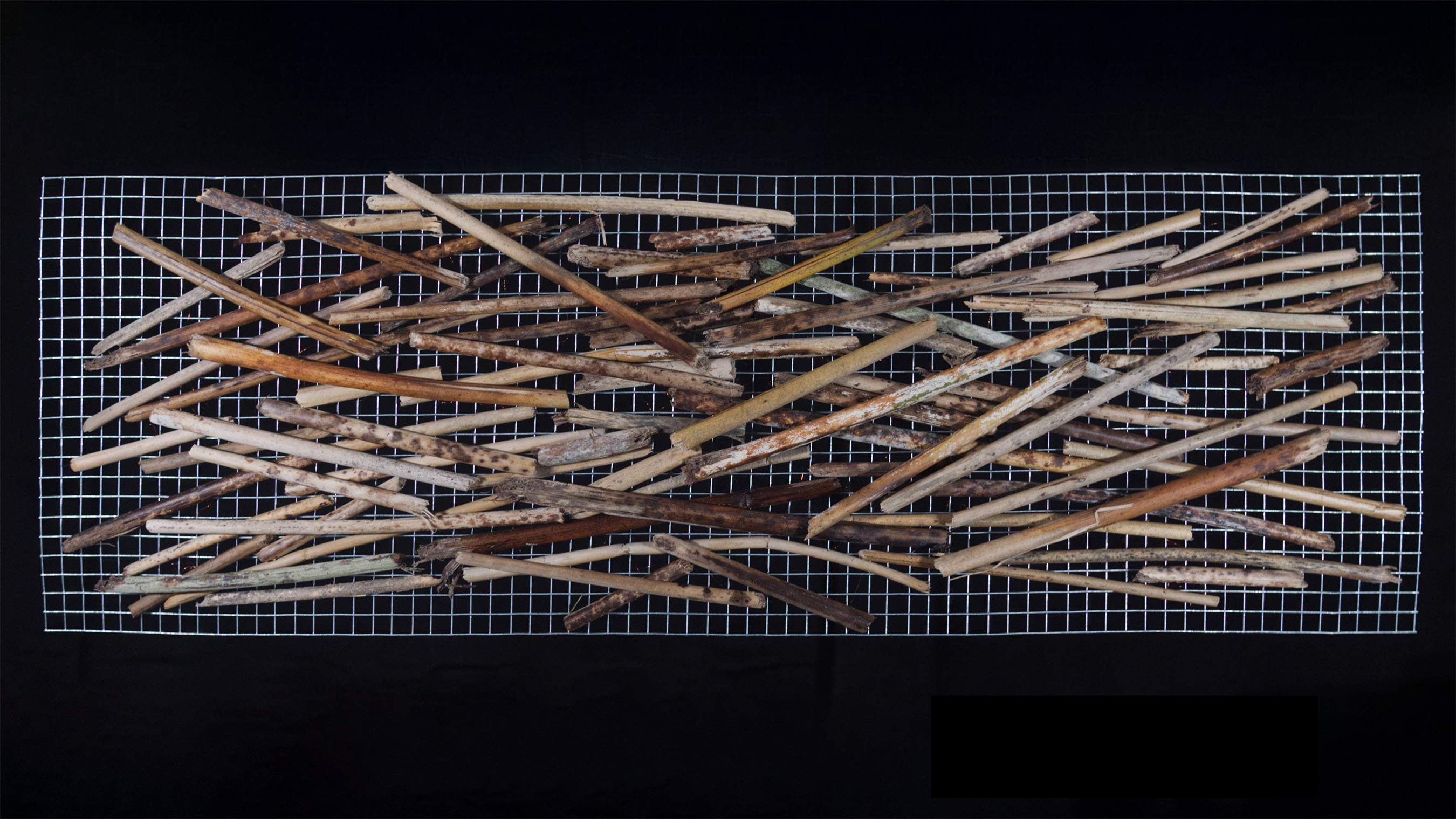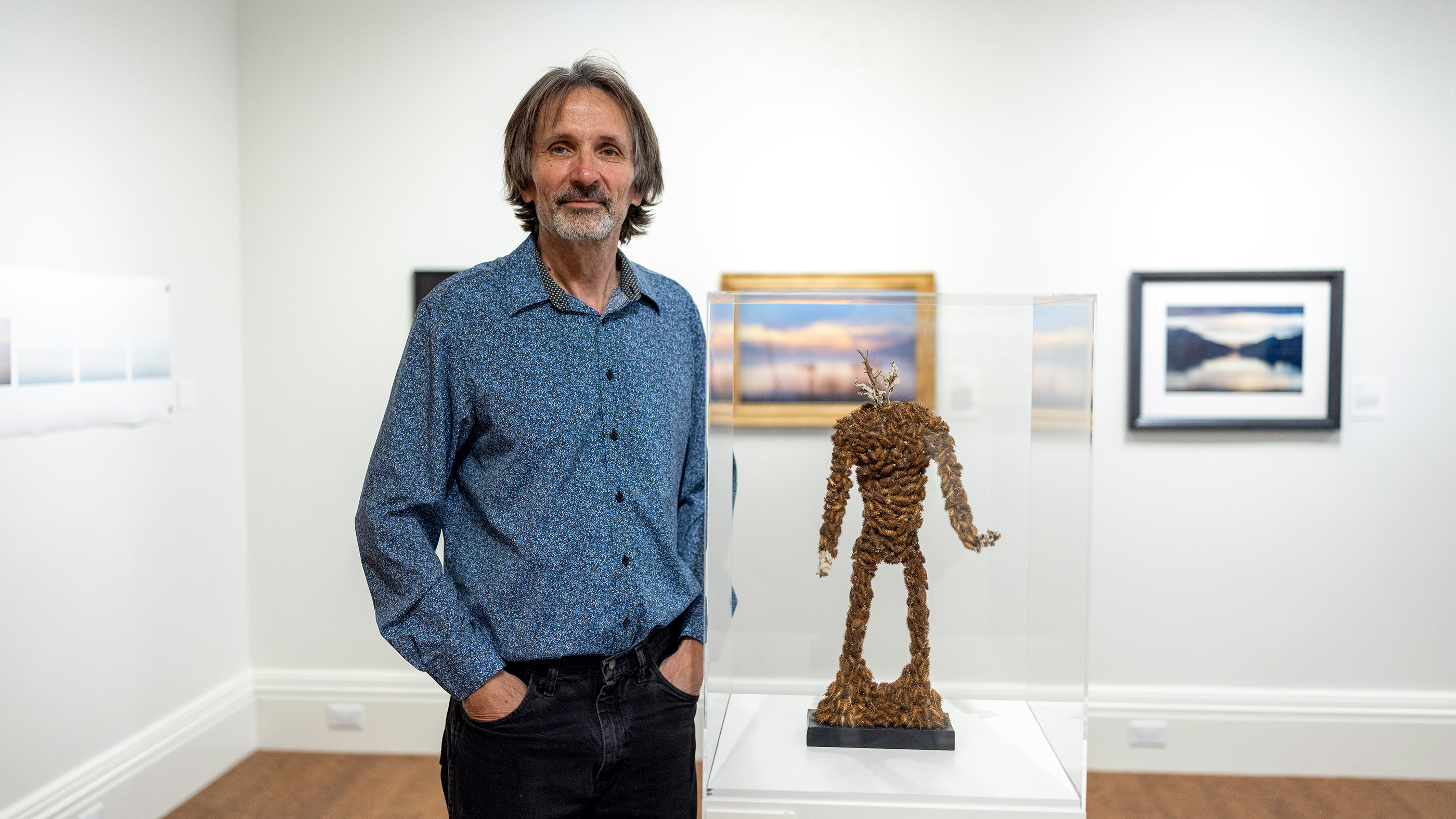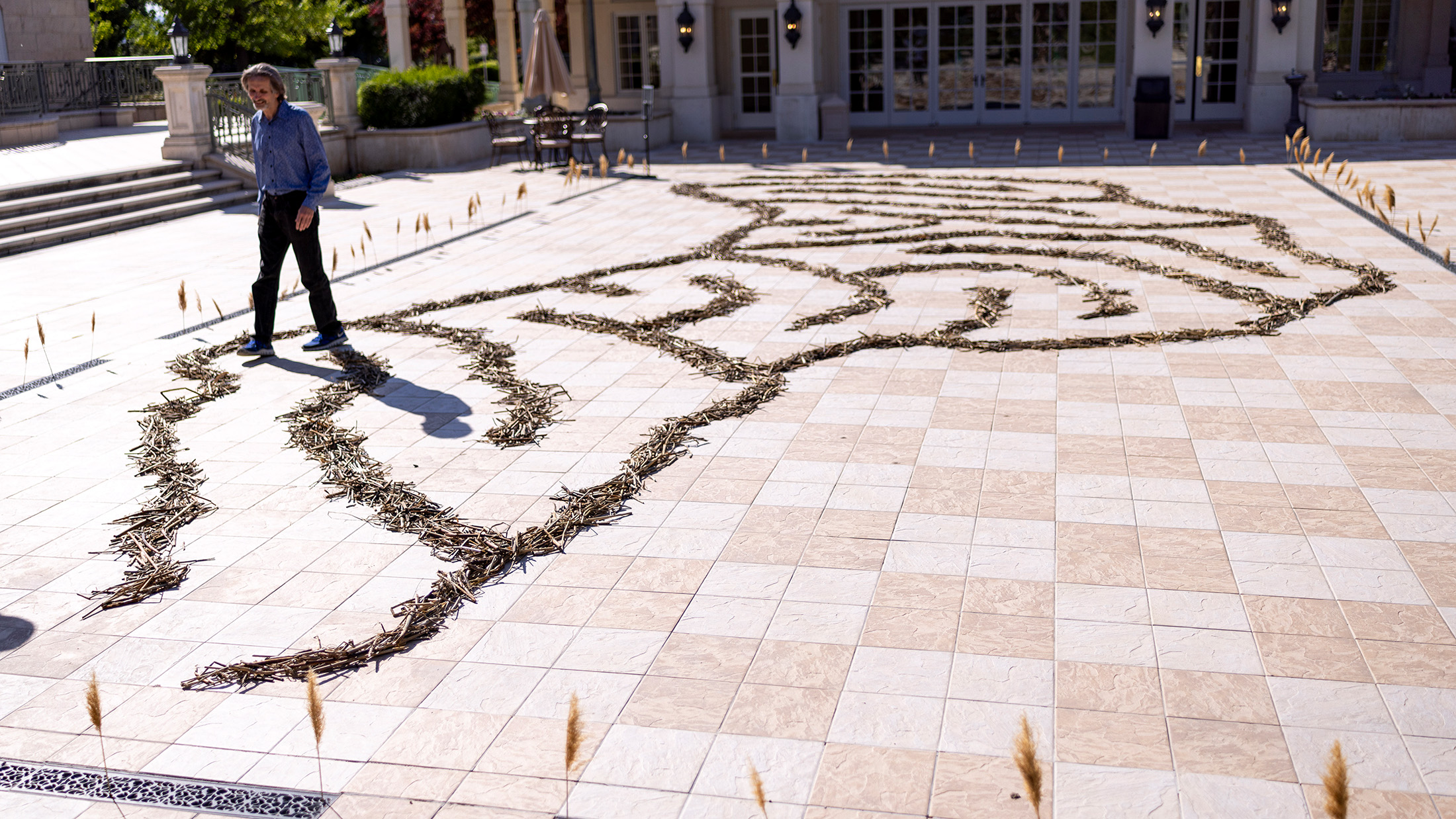Jon Forsyth, a local nature artist, examines Utah Lake through his work on display at the UVU Museum of Art.

On the banks of Utah Lake, thick reeds called phragmites sway in the shallow waves. While they might look nice, these tall reeds are actually an invasive species introduced by early settlers, choking out the native plants and destroying wildlife habitats. Jon Forsyth, a local nature artist and featured artist in the UVU Museum of Art’s exhibition, Healing Waters: Restoring Our Relationship with Utah Lake, is using the reeds to spark a conversation in how Utah Lake has been treated in the development of Utah as a state and community.
Forsyth has four main works on view in the exhibition and each piece utilizes either pieces of phragmites or other natural materials found around the shoreline of Utah Lake.
“As I was collecting pieces of the reeds, I kept finding other materials that I wanted to use or that I found interesting,” Forsyth explained.
One of the first pieces is titled “Shoreline Visitors.” The dried reed pieces that Forsyth had collected are now part of a wall piece, strung together with copper wire and mesh and aligned in more or less parallel lines that represent the patterns the broken reeds create when washed ashore and piled up along the shoreline. “I wanted to illustrate how prevalent these plants are. They shouldn’t be there, but there are so many of them at this point,” explained Forsyth.
 Photo Credit: Jon Forsyth
Photo Credit: Jon Forsyth
While he was collecting reeds, Forsyth had to stop multiple times to detach cockleburs — spiky, hard seed pods that stick to clothes and shoes easily — from himself. What started as a nuisance morphed into another source of inspiration for his work titled “Take Me Home,” a humanoid statue made of wire, cloth, and cockleburs.
“I made an armature, about 12 inches high, of wire and wrapped it, actually, in strips of old socks,” said Forsyth with a little grin about his unusual composition. “Afterwards, I just started sticking the cockleburs directly to the socks and to each other. No glue, just cockleburs holding it all together.”
The decision to forgo a medium to hold the sculpture together highlighted Forsyth’s intention of showcasing the tenacity of the cocklebur and Utah’s landscape as a whole.

Photo Credit: UVU Marketing, Jay Drowns
Not all of Forsyth’s works for the exhibition are still available for view. On May 20, as part of the exhibition’s opening reception, Forsyth installed a one-day only, meditative labyrinth in the back gardens of the Museum of Art. This labyrinth, made completely of dried reed pieces and shaped in Utah Lake’s outline, was titled “Invasion” and served as another reminder of how we have mistreated Utah Lake and its surrounding environments. “In the ‘80s, people used to wear shirts that said Ski the Scum,” said Forsyth. “Because that was the nickname for Utah Lake at the time.”

Photo Credit: UVU Marketing, Jay Drowns
Unfortunately, as the nickname Forsyth shared suggests, Utah Lake has had a reputation of not being the most appealing attraction. From the overfishing of native fish species by pioneers and other settlers to the dumping of public sewage to the runoff of Geneva Steel that continued until the early 2000s, Utah Lake has fought against mistreatment for years. The Utah Lake Authority (which transitioned from the Utah Lake Commission in 2023) worked to strategically plan projects that will help with the revitalization of the lake, combating public perception that the lake remains in an undesirable condition. In addition to the phragmites removal, these projects include the Provo River Delta Restoration, beach and marina improvements, and water quality studies.
The Museum’s exhibition is also part of this initiative to rehabilitate Utah Lake, highlighting the lake’s everyday role in the surrounding communities’ lives. Forsyth’s work, along with the rest of the exhibition, will be available for viewing until Sept. 27, 2025. For more information about visiting the Museum, please visit https://www.uvu.edu/museum/plan/.